Top 5 Least Useful Horological Complications: And Why They Are Still Awesome
Whenever the topic of horological complications comes up among WIS, they seem to love mentioning which complications are their favorites or – to get the debate going – which one is the best. People love a debate (NOT) and love to flex horological knowledge.
The usual suspects show up among the favorite useful complications: a power reserve on a manual wind movement for its critical role in preventing a watch from winding down; the perpetual calendar for its extreme longevity before needing to be adjusted; the GMT for the business traveler crossing time zones and doing business internationally; and the ultimately functional chronograph for its wide variety of timing uses.
Someone might say that the best complication is the tourbillon because it was invented by Abraham-Louis Breguet, the patron saint of Swiss watchmaking. This will undoubtedly be challenged as many don’t consider the tourbillon a complication – and in most tourbillon wristwatches its usefulness is seriously in doubt anyway.
But in every debate, there are complications that don’t get mentioned simply because they lack wide acclaim as being very useful to the modern watch aficionado.
You probably won’t hear someone make the case for the astrolabe dial or praise the local solar time indication.
Sure, the moon phase might have its fans (me among them), but people aren’t really claiming it has a critical modern function for anyone other than a technology-averse fisherman who needs to know the tides.
Still, the case could be made for all of these being functional to certain segments of the society, even if it is relatively narrow.
But there are definitely a few complications that have dramatically little to no use for almost any user, especially when it comes to making the watch more functional, accurate, or versatile. Such complications are a novelty among novelties and tend to only show up on grande complications or watches vying for the title of most complicated watch.
But in the real world, some of these complications are pretty useless. Don’t think I am saying they aren’t cool, because they are. Each complication that has little real world application is still pretty darn awesome for some technical reason, and today I want to run through what I think might be the top five most “useless” complications. Immediately followed by why they are awesome and deserve to be seen in watches more!
So let’s get the ball rolling and count down from my first pick for least useful complication.
No. 5: gyroscopic balance module
Like the tourbillon, you probably shouldn’t call this a complication because it doesn’t add a function. I’m getting that out of the way first.
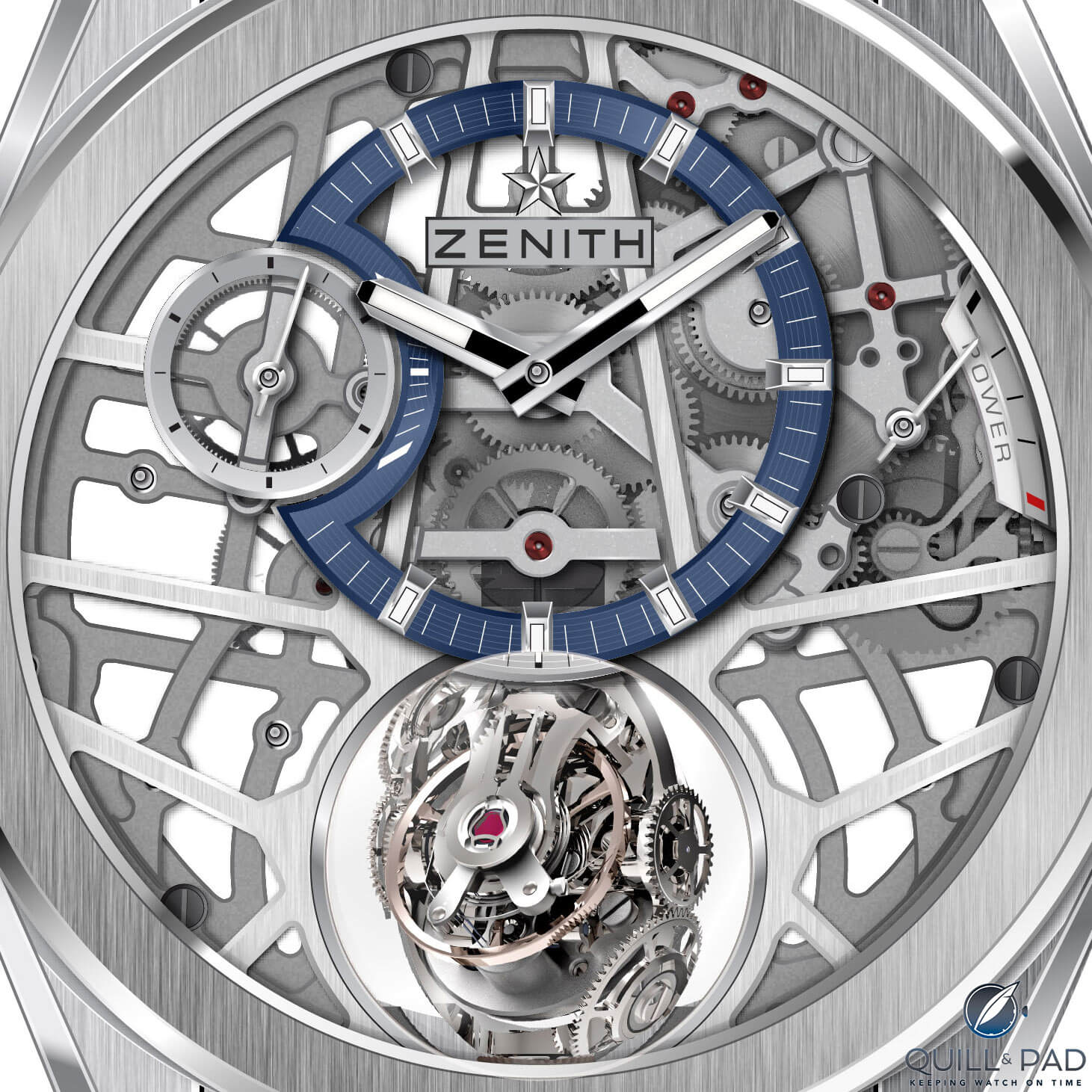
A close look at the Zenith Defy Zero G’s gyroscopic balance module
The gyroscopic balance module is a very rare feature, only found in Zenith watches such as the Defy Zero G, and there have only been a handful of editions over the past decade or so.
The idea is that the balance and escapement are mounted in a gyroscopic gimbal that can rotate in any direction regardless of the position of the watch. It supposedly keeps the balance perfectly flat so that it can eliminate the effects of gravity on a balance constantly changing orientation.
The only problem is that it would be hard to prove that it works in the real world because a gimbal that small simply cannot work as intended. The weight is too near the pivot points, so instead of a steadicam-like motion, you get something akin to a whirling rotor, but in every direction.
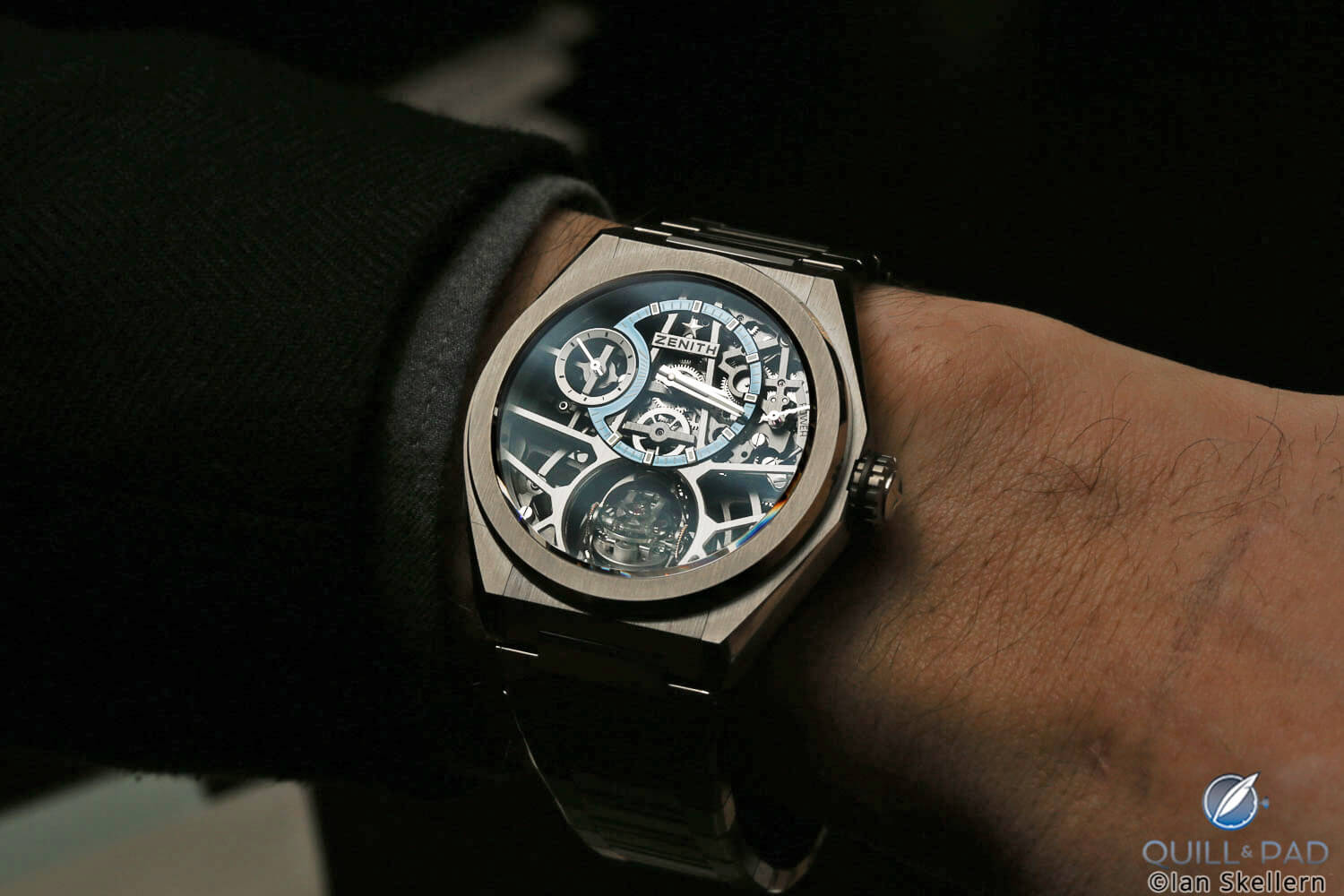
Zenith Defy Zero G on the wrist
I’ve seen this in action, and it simply spins willy nilly because the weight cannot keep it perfectly level unless the watch is barely moving. The only way it could work would be if the weight was made from a nugget of neutron star, otherwise it’s just going to flail around and not provide any real stability.
But that doesn’t mean the engineering behind it isn’t spectacular!
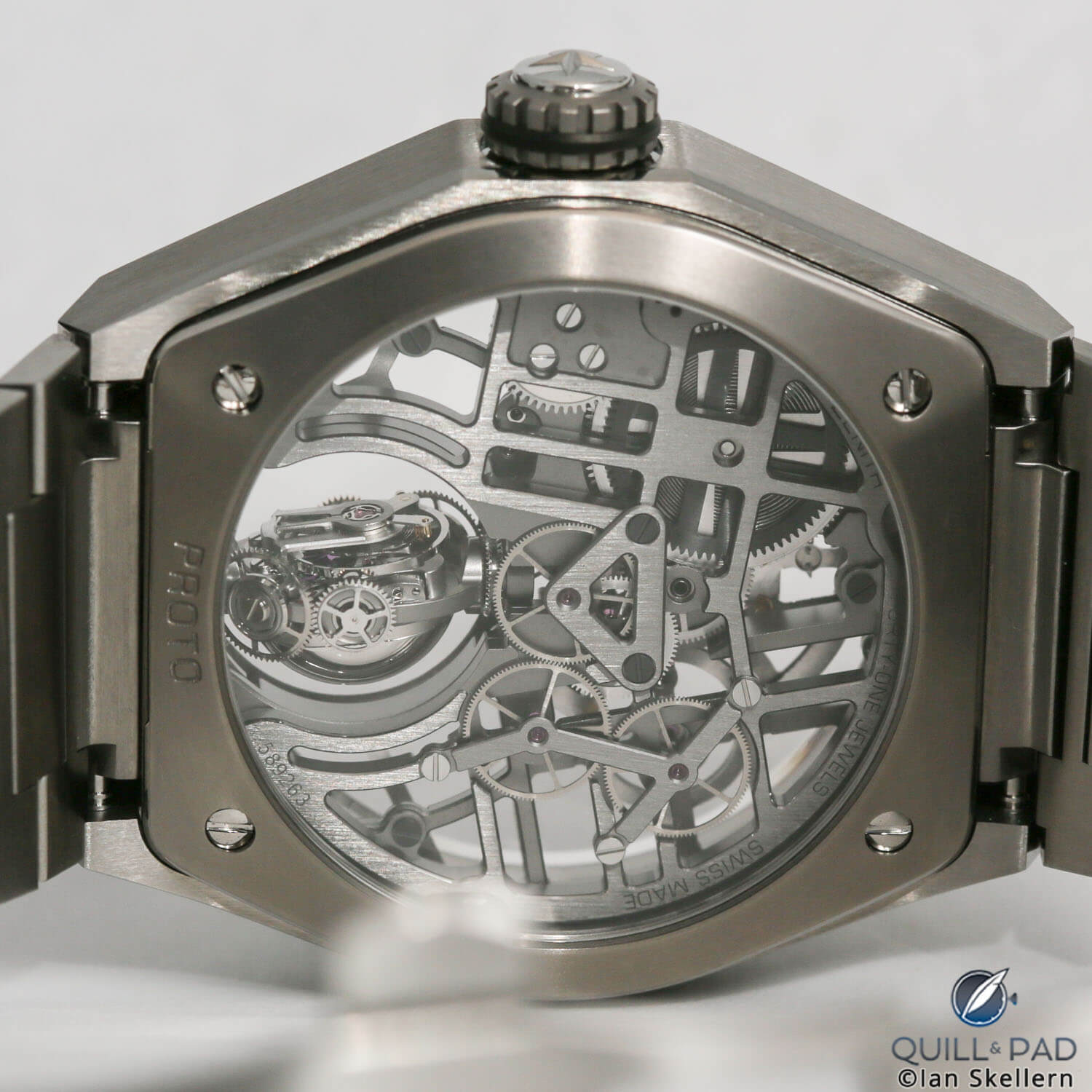
View through the display back of the Zenith Defy Zero G with the Gravity Control escapement module on the left
The mechanism had to allow the balance and escapement to be constantly driven with sufficient torque via a complex set of differentials allowing it move in any direction at any moment. No easy task. And the latest version saw a major reduction in size, meaning that it is even more incredibly complex to engineer and assemble.
Too bad that it probably does very little for what it’s supposed to do, but I absolutely love it nonetheless.
No. 4: chronographs accurate to 1/1000th of a second
The chronograph is arguably one of the most useful complications in watchmaking. It allows for precise control over the movement and the ability to time things down to a fraction of a second, some even allowing splits, on-the-go flyback, and high-frequency timing.
But the one that enters into the realm of useless is the 1/1000th of a second chronograph, most famously exemplified by the TAG Heuer Mikrotimer Flying 1000.
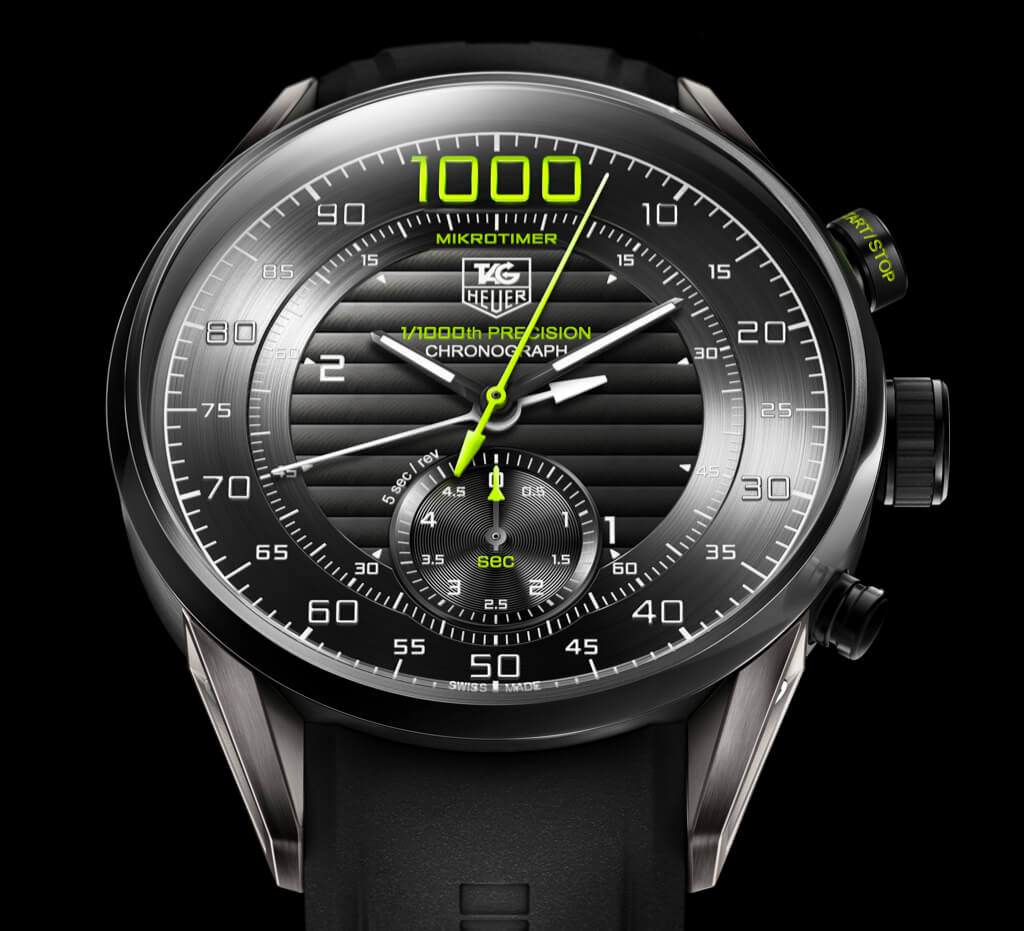
TAG Heuer Mikrotimer Flying 1000
The reason it is useless comes down to biology: human reaction time is, on average, around 0.25 seconds, possibly up to 0.15 seconds in ideal conditions. Did you see how that was measured? With two decimal places because anything more is leaving the realm of significant figures.
Human reaction time is never fast enough to need anything more than 1/100th of a second precision, and in a majority of cases anything over one-tenth of a second is probably too fine to really distinguish for most people.
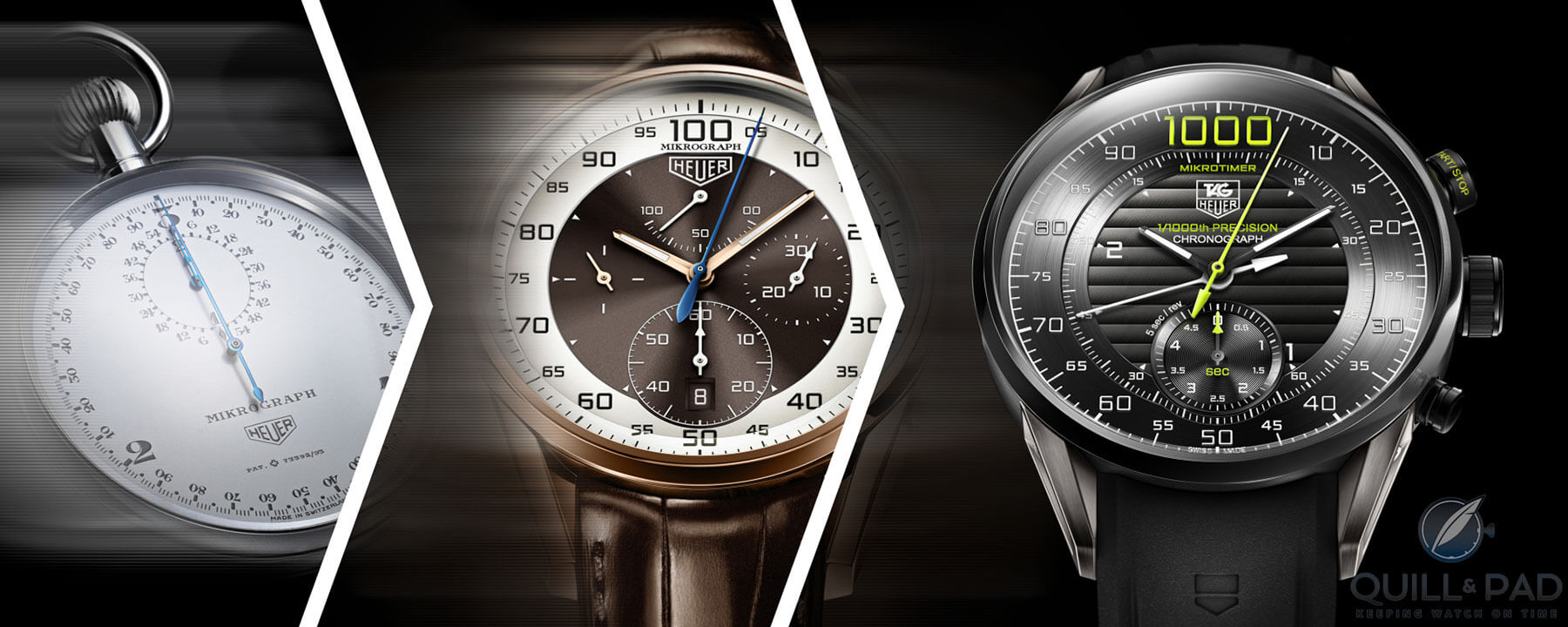
The level of precision in a 1/1000th of a second chronograph is for no other purpose than because they can: no human can take advantage of the fine graduations after one considers all the factors involved in reacting and pushing a button.
But who cares! The engineering behind such a mechanism is the incredible part: getting components to move that fast . . . starting and stopping and starting again is seriously hard on the tiny components.
The forces engineers had to overcome were significant, including challenges related to power consumption, lubrication, and the high precision tolerances necessary.
Sure, you can’t take advantage of it in any appreciable way, but you can watch it fly around the dial and pretend like you actually tried to stop it at a different point each time instead of it being more the result of the interactions of the components and your slow biological processes.
No. 3: date of Easter
Christians make up 30 percent of the human population, so clearly a lot of people would like to be aware of the date of Easter, one of the religion’s most important holidays. But since only a handful of machines have ever been created to automatically display this date, it clearly wouldn’t be reaching its intended audience.
And since we know the moon phases for the next few millennia due to astronomers calculating this, and we know how to count, we also know the exact days of Easter for a long, long time.
This complication’s intended use is remarkably slim and definitely not necessary.
But what is interesting is that the date of Easter is one of the most difficult mechanical problems in horology due to the variability that comes from how it is calculated. This makes it a long-time holy grail (pun intended) of mechanical complications.
The date of Easter is based on the lunisolar calendar (moon phases relative to the time of the solar year) and is the first Sunday after the full moon that comes on or after March 21 – meaning it can fall anywhere from March 22 to April 25.
So the date of Easter requires combining a perpetual calendar and an accurate moon phase simply to calculate the hopscotching Sunday of Easter.
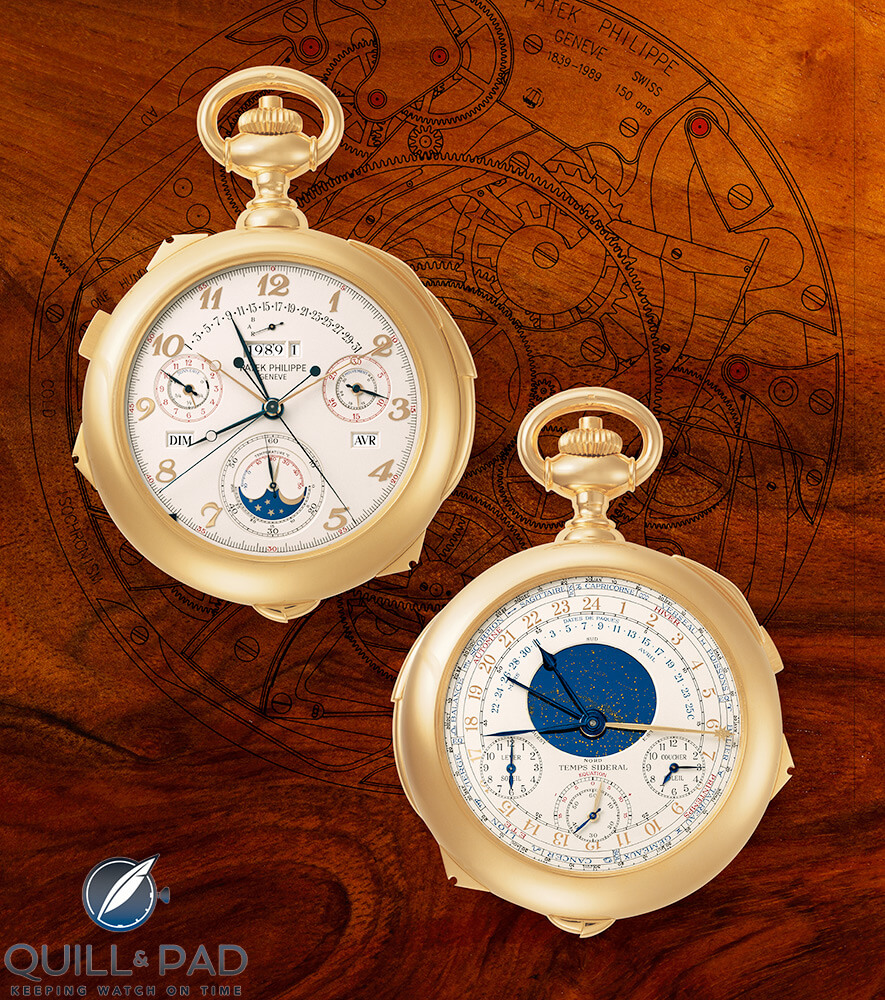
Patek Philippe Caliber 89 in yellow gold
As I mentioned, crafting a mechanical complication for this is not an easy task and one showing why it is rarely ever attempted. The calculation is known as the Comptus, and as far as I know very few clocks in history have integrated it, and only one watch: Caliber 89 by Patek Philippe.
Konstantin Chaykin made a clock with the date of Easter, though this was also a very complicated four-sided clock with tons of complications. Creating an Easter date complication is a ton of work, and blatantly not necessary.
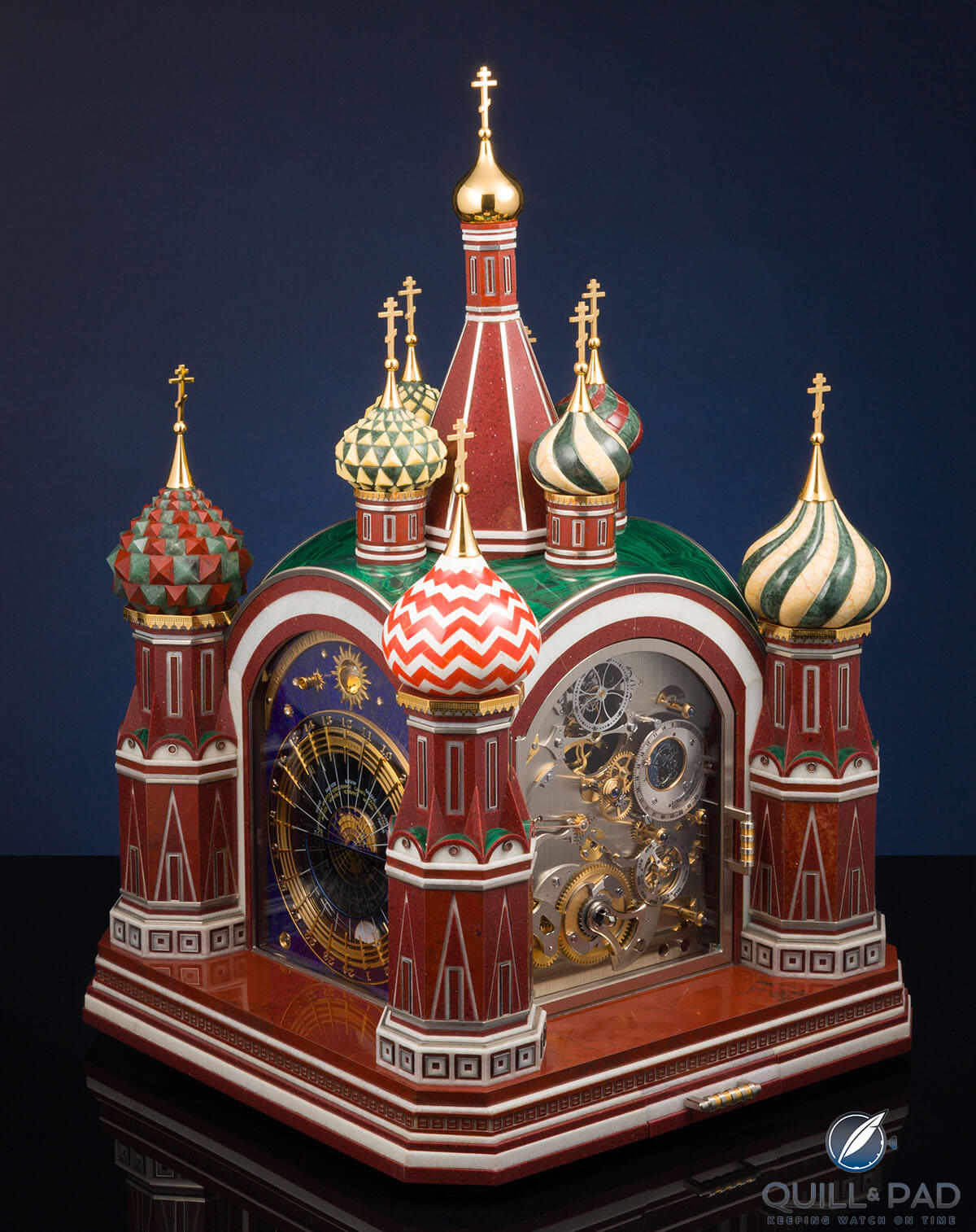
Konstantin Chaykin Moscow Comptus Clock
Oh, and what makes it even more difficult? Different groups of Christians (namely the Eastern Orthodox, Oriental Orthodox, Anabaptists, and Christian Berbers) use different calendars to calculate Easter, specifically the Julian calendar (as opposed to the Gregorian calendar everyone else uses), which puts the date 13 days later than the western (Gregorian) date.
So even if you build a complication for one, it would be off for the other unless you added another complication to display the difference.
While it is extremely limited in its use, the mechanical solution is incredibly difficult and supremely cool. Of course I’ll still just use my phone’s calendar.
No. 2: hidden/on-demand time display
The hidden-time display, otherwise known as time on demand, is a group of complications that keep either the minutes or hours, or both, hidden from view or from being displayed until a pusher is pressed – or in one case, until the watch is oriented in a very specific way.
The complication is often used as a playful take on the time display or as a way to get you to stop focusing on the time in a busy world. Depending on the iteration, you may not even see the hands until the mechanism is activated and they spring out to show you the time.
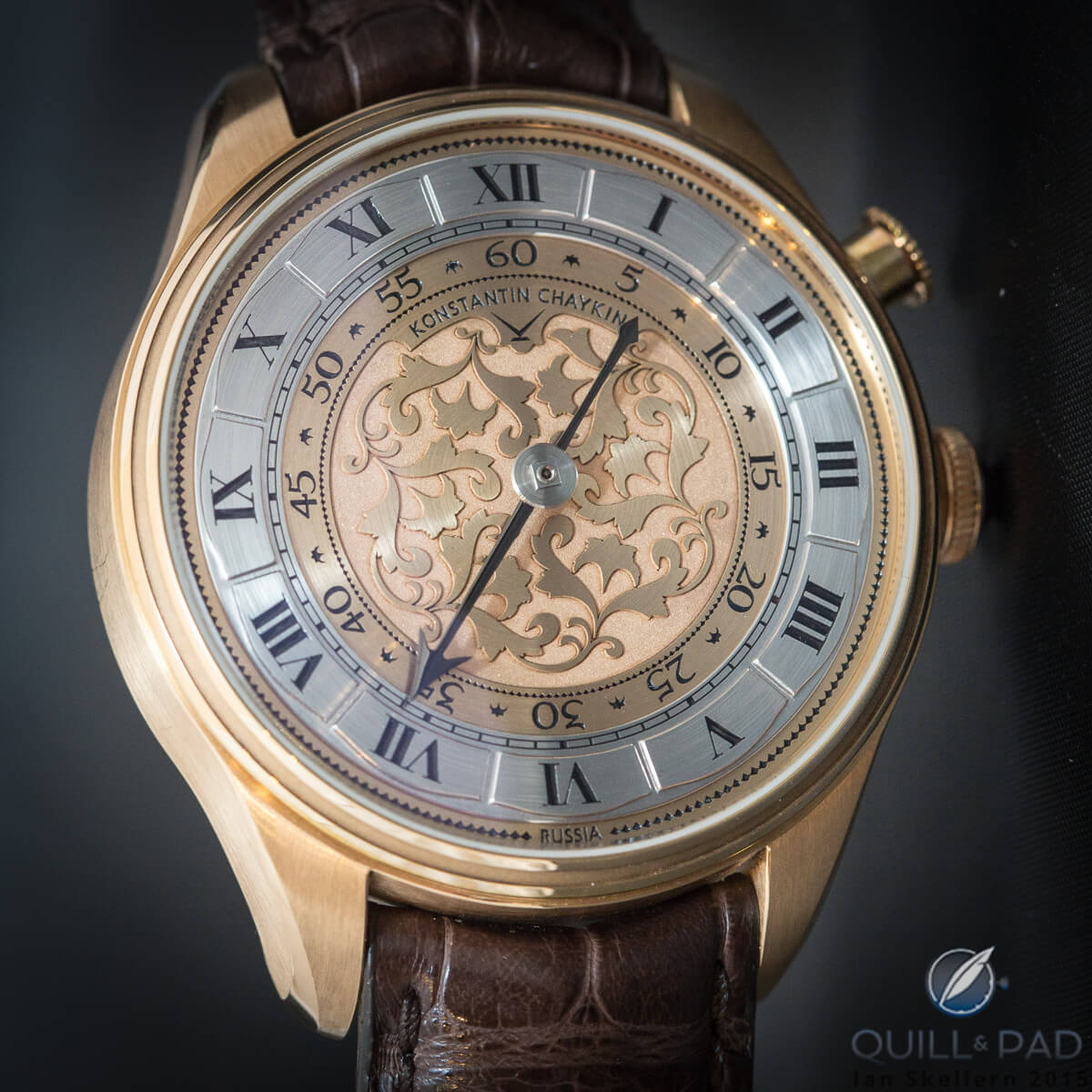
Genius Temporis by Konstantin Chaykin
An interesting take on this comes from Konstantin Chaykin, who created the Genius Temporis, a watch with a single (double-ended) hand that displays the current hour with the large end of the hand. When a pusher at 2 o’clock is pressed, the hand spins around until the small end comes to point at the current minutes.
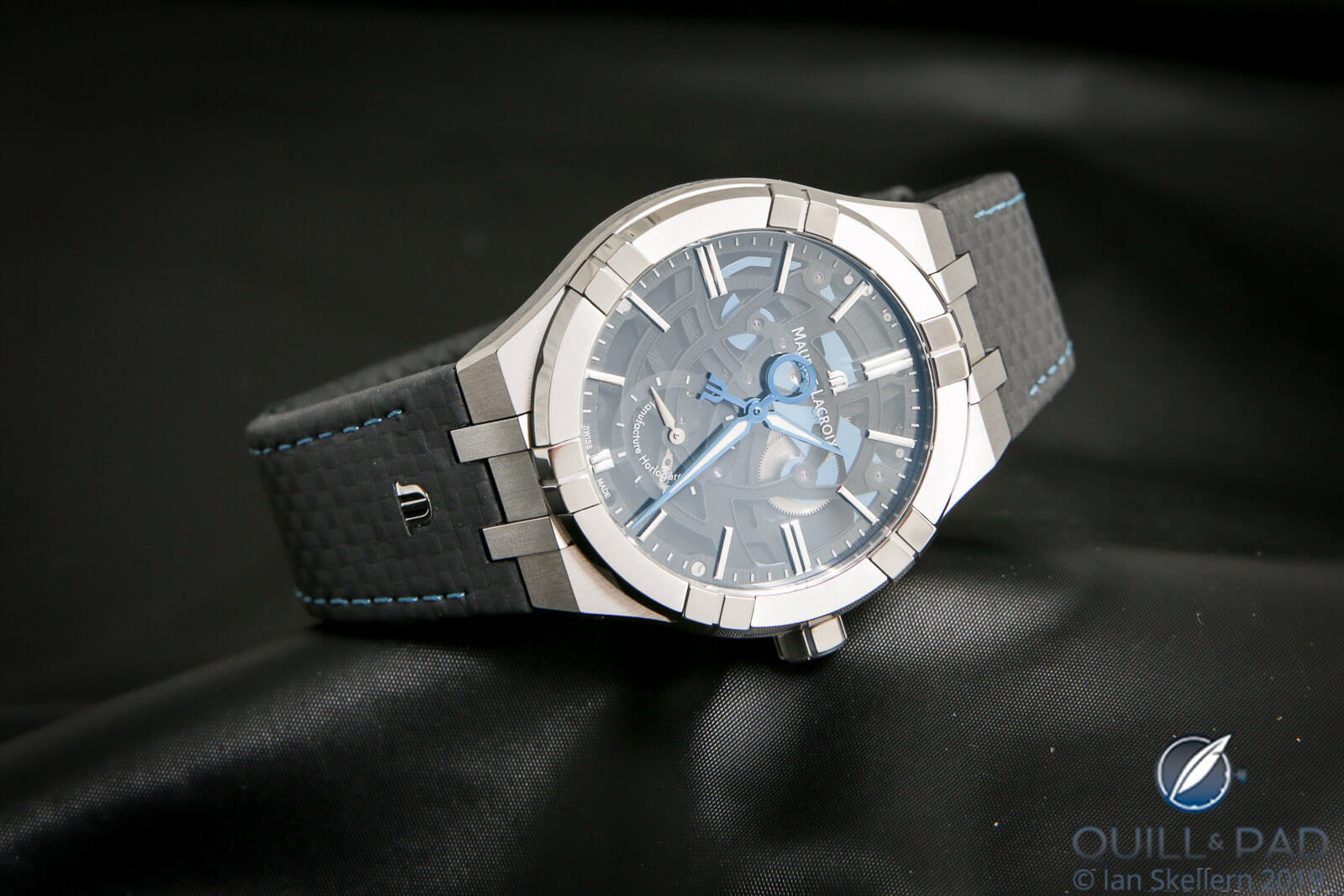
Maurice Lacroix Aikon Mercury Only Watch 2019
The method for creating this variable on-demand display can differ for every single watch that includes one. Maurice Lacroix recently released the Aikon Mercury in which the hour and minute hands spin freely at all times until the watch is held perfectly upright when you see the hands spin into the proper position to display the current time.
Clearly, this mechanism, while thematically similar to the Genius Temporis, is dramatically different in design and function.
Another variation is a time display that can change to display something else before returning to displaying the current time.
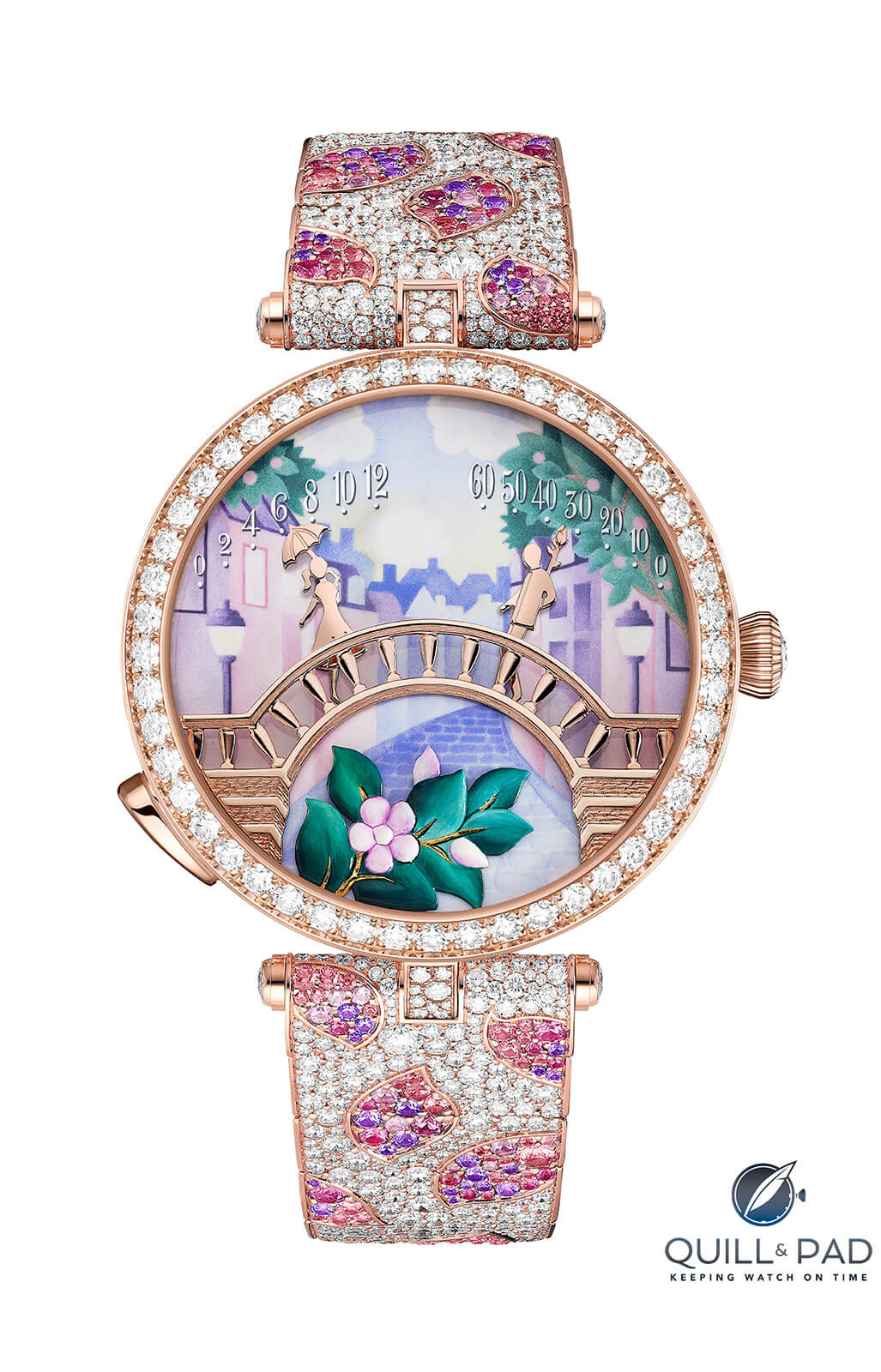
Van Cleef & Arpels Lady Arpels Pont des Amoureux ‘Spring’
Van Cleef & Arpels has an example of this with the Agenhor-engineered Pont des Amoureux, where the time is displayed via two figures slowly climbing an arched bridge to meet in the middle and kiss at noon and midnight.
The time is always displayed, but you can activate the midnight kiss on demand thanks to a pusher at 8 o’clock. Functionally, this is the same intent as the time on demand, but in reverse; it also shows the mechanical creativity possible with such a complication.
But if we are talking about how useful hiding the time is, I can’t come up with many practical reasons for it outside of keeping someone from being distracted by not allowing him or her to always check the time.
This is a laudable use for the right people, but I would venture that hardly anyone would need a watch like that for that specific reason. And one could argue that a pocket watch might be a better and easier solution of keeping the time out of easy view.
But, really, it doesn’t feel like there is any sufficiently valid reason to have the complication other than because it is interesting and playful.
Mechanically, these are sort of a smorgasbord of creative solutions, each one providing another way to achieve the same goal. But like others on this list, I don’t think there is an objective reason for more than a handful of people to ever need something like this.
And finally we reach the complication that I believe is the most useless complication found in a watch today.
Drumroll, please . . .
No. 1: foudroyante seconds
Unless you are a complication nerd into every type of mechanical complication and very well versed in the odd, you may not initially even know what this is. And that is my first piece of evidence supporting its utter uselessness.
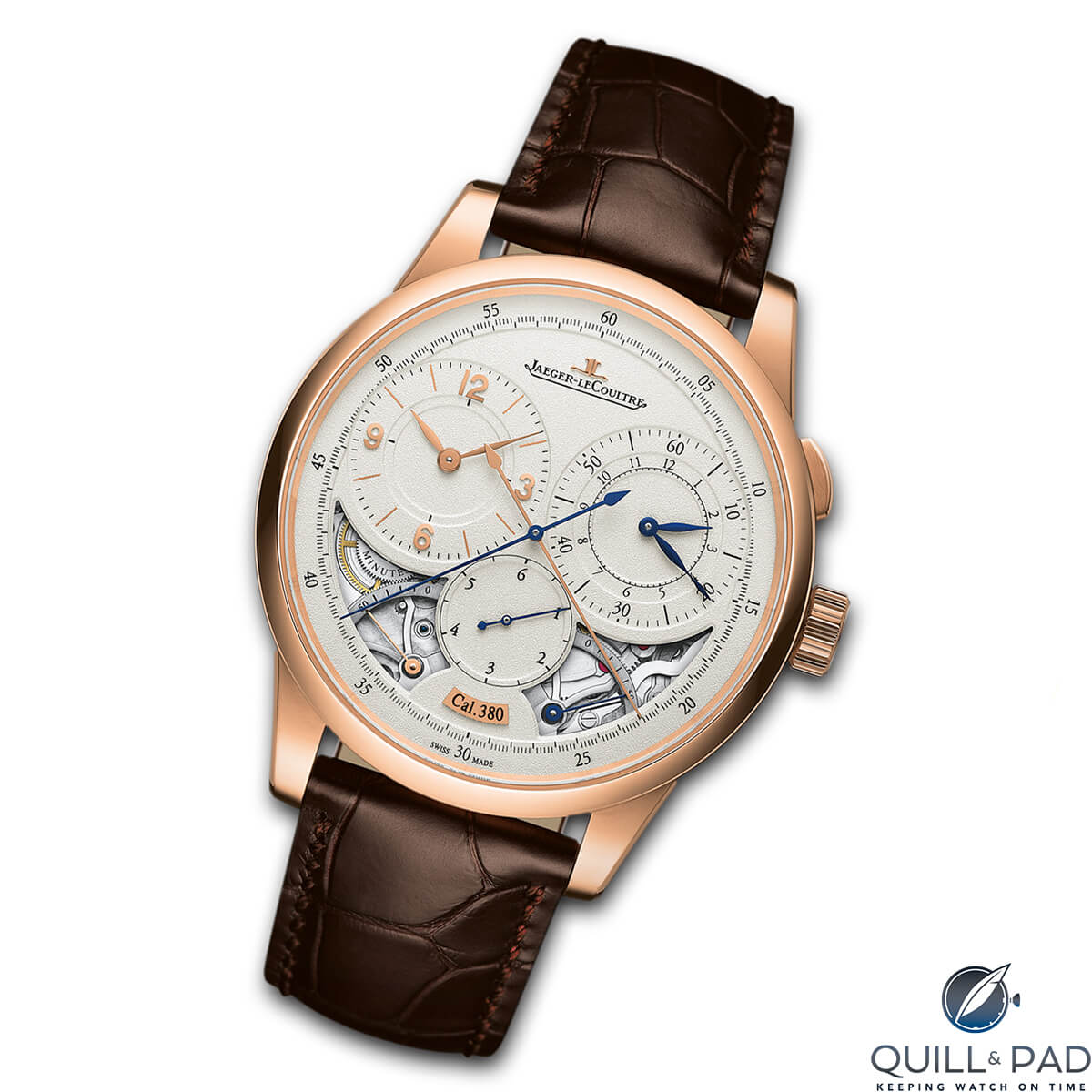
Jaeger-LeCoultre Duomètre à Chronographe
The foudroyante is a hand displaying each individual tick of an escape wheel, usually by a wheel that meshes with another toothed wheel attached to the escape wheel.
This foudroyante wheel will have the same number of teeth as the beats per second of the balance, so one rotation of the gear equals exactly one second. This creates a blazingly fast hand that races in circles, but stops completely with every tick, causing a hand that looks like a super-low framerate animation of a spinning hand.
The technical challenges accompanying the foudroyante include rapid power consumption, introducing significant timing inaccuracies, and requiring a very well balanced and lightweight hand to prevent wear or drag on the escapement (part of those timing inaccuracies).
It is an odd thing to watch, somewhat disconcerting because it covers so much distance but stops completely with every beat of the balance. Unlike a sweeping second hand or the dead second display, it doesn’t have much use because it simply moves too darn fast.
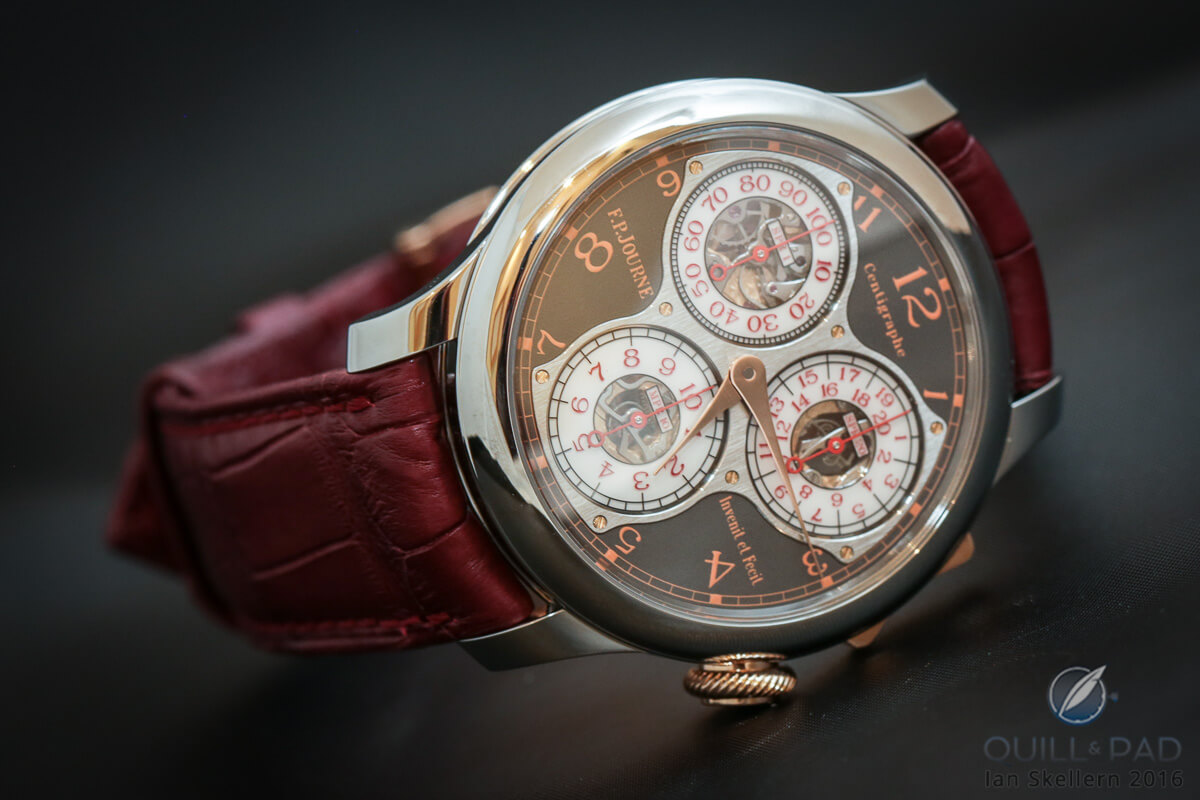
F.P. Journe Centigraphe Souverain Anniversaire
Visually it is incredibly impressive, and I would say rivals a high-speed chronograph hand or a tourbillon for a feature destined to capture the attention of those glancing at your watch.
Anything moving that fast is bound to grab the gaze, but it really lacks much in usefulness. That is unless it is found on a chronograph and can be stopped. And this is precisely where one might find a foudroyante: as a fraction-of-a-second display for a chronograph function.
And while this might help to determine the fractions of a second that you measured, the regular chronograph second hand will also be able to display this, albeit in a smaller and possibly harder-to-read format, but still as a typical feature of a chronograph.
So the foudroyante is often an addition that isn’t entirely necessary in that context, even though it technically makes sense.
But it isn’t always used in conjunction with a chronograph, and in that instance I can find no justification for its presence outside of being a quirky feat of mechanical watchmaking. The display moves too fast to be read; it is more of a visual representation of the escapement than anything.
Watches featuring a foudroyante chronograph include the Habring Foudroyante Felix, the Jaeger-LeCoultre Duomètre à Chronographe (a semi-useful iteration), and the F.P. Journe Centigraphe Souverain (another chronograph).
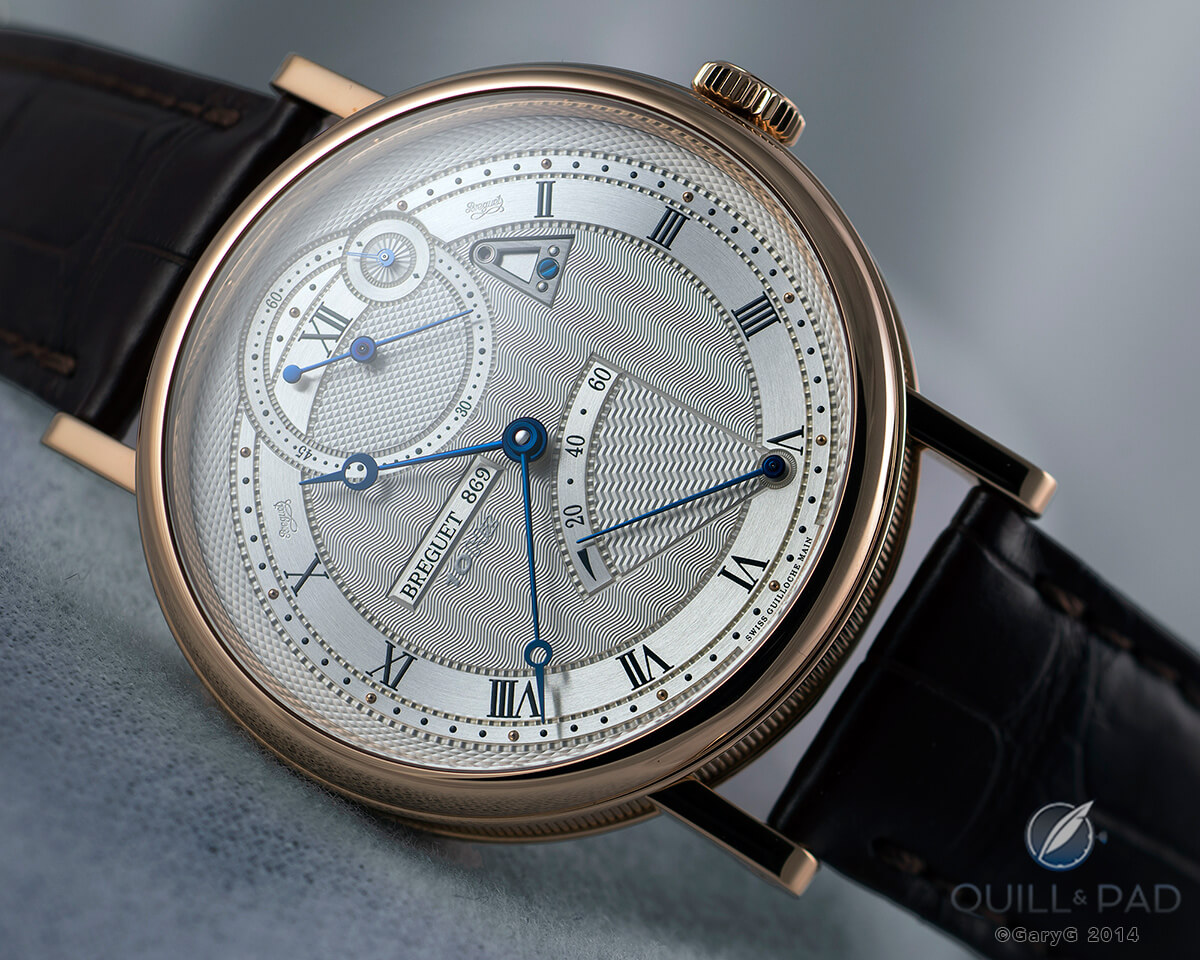
The enticing Breguet Classique Chronométrie Reference 7727
“Foudroyante” is sometimes called “flying seconds,” though I personally would say that the name flying seconds should refer to something different, specifically the semi-foudroyante, which displays the rapidly moving second hand but with a rotational period of more than one single second.
Some high-frequency chronographs do this, displaying six seconds or ten seconds so that the display is less jarring. This is also found on the Breguet Classique Chronométrie 7727, which features a two-second subdial that makes 20 distinct stops in one rotation. But since the subdial is so small, the distance between each stop is miniscule, making it appear much smoother and lacking the dramatic display of a true, one-second foudroyante.
And that is, in my opinion, why it is included on any chronograph or regular wristwatch: drama.
The lightning speed (which incidentally is the origin of the name: “foudre” is French for “lightning”) of the start and stop, five to ten times a second, is very alluring. But it is also very negligible to the use of the watch, and unless it is the only measurement of the fractions of a second on a chronograph, it is superfluous – put there simply to make reading the fraction displayed elsewhere more visually friendly.
And for that reason, I think it is the most useless complication in a wristwatch, and simultaneously why it is so dang cool.
It has very little reason to exist as it does and makes the movement vulnerable to many issues thanks to its inclusion, but tickles my visual cortex so precisely that I have to stop and ogle.
I mean, this is why we get into mechanical watches in the first place: they are, as a category, wholly impractical and pointless thanks to technological advances over the last century. But they do cool things and that makes us smile, so I guess it’s even.
* This article was first published on December 15, 2019 at Top 5 Least Useful Horological Complications (And Why They Are Still Awesome).
You may also enjoy:
Zenith Defy Zero G: A Lesson In Miniaturization
A Mechanical Masterpiece By A Mechanical Mastermind: The Konstantin Chaykin Moscow Comptus Easter ClockIn The Face Of Complexity, Simplicity Rules: The Konstantin Chaykin Genius Temporis
Why I Bought It: Breguet Classique Chronométrie Reference 7727
The 10 Most Accurate Moon Phase Wristwatches Today (Plus Honorable Mention)
Leave a Reply
Want to join the discussion?Feel free to contribute!



The date of Orthodox Pascha (Easter) is not simply calculated by adding 13 days to the Western date (as one can do for the date of Christmas in countries that still use the Julian Calendar). An entirely different method of calculation is used–it incorporates the Julian Calendar, to be sure, but there are other differences that are so obscure that only experts understand them. In some years, the Western and Eastern dates are the same–in others, the Eastern Date is one week or four weeks later than the Western. As the Julian Calender continues to fall farther and farther behind the Gregorian, the dates of Orthodox Easter will get farther and farther apart from the Western. To build a watch or clock that calculates the date of Orthodox Pascha, one must design a completely separate complication, as Constantin Chaykin did. Thank goodness the rest of us can simply look it up on the Internet.